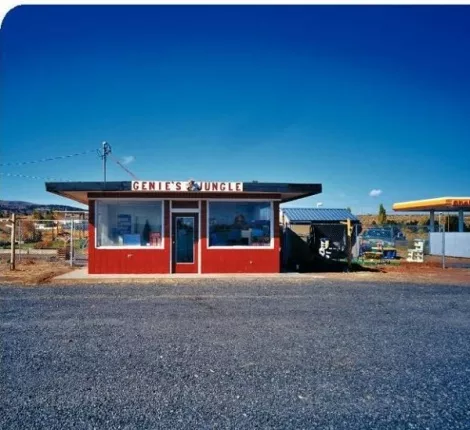
When the four photographers in the Women Who Shoot photographic exhibit at Utah Arts Alliance Gallery decided to collaborate on a proposal for a group show a year ago, they didn’t decide on a theme—but one seemed to arise.
Color doesn’t even seem like a theme in some ways, as all-encompassing a category as it is. But, the way these artists use it, they explore the use of color photography in similar ways, so the entire show becomes an extended meditation on the visible spectrum. (Sculptures by Marv Poulson are also part of the exhibit.)
Amanda Moore really gathered the momentum together, notes Shalee Cooper. Moore received her master of fine arts degree in photography and is an adjunct professor at Weber State University and Westminster College as well as an associate instructor in the University of Utah. Moore was unable to comment for this story for medical reasons. “We didn’t want to limit ourselves with a theme,” explains Cooper, “because then it would just become a comparison of how we treated the theme.”
Cooper received a BFA in photography from the University of Utah, has lived and photographed in London, Paris and Amsterdam; and, until recently was director of education and gallery curator at Saans Photography. She is currently an art consultant at Alpine Art and an associate instructor at the University of Utah
Cooper usually shoots in black-andwhite, but she started working with color about a year ago. Her black-and-white work can be seen at the “Emerging Local Artists Showcase” at Aperture Gallery (see Essentials, p. 21). Her work in this show is divided between large abstract photos and smaller images mounted behind large matte boards, with a half-frame camera that enables her to expose two images on one frame of film. Two of the large abstract images are taken from a segment of the awning at R.C. Willey home furnishings and a red metal sculpture in front of Phillips Gallery.
It is fascinating to note the way the show has been mounted. Rather than separated by each artist’s work, the photographs are blended together so the show creates a visual flow as you walk around the room.
Works by Steph Parke—supervising editor of Light Leaks, a print magazine dedicated to low-fidelity photography like Polaroids, toy cameras and the like and who has been shooting campgrounds for the U.S. Forest Service— lead off as you enter the room and circle from left to right. Her “Camp” series of Polaroids is comprised of the sideboards of campers, weathered and faded earth tones reminiscent of the 1970s. Her original Polaroids are mounted as are larger prints that emphasize the flatness of the surfaces.
On the same wall as her Polaroids are images from the Musings series by Zuzanna Audette, a Polish-born photographer who did undergraduate work at the Pratt Institute in New York City and received a master of fine arts degree in photography at the University of Utah, where she currently teaches. While living in New York City, she was active in the fashion industry, but her headshots of models use muted colors and contemplative poses, as though a mediation on the nature of beauty and its cultural construction in our society.
Audette’s works continue onto the next wall, in combination with Cooper’s large abstracts and around the corner are Moore’s Polaroids from her Moving True West series of signage, small motels and sights captured during road trips in the Intermountain West. Many are humorous or quaint, like “Antelope Station Artistic Taxidermy.” These roadside views could have been taken from the ’50s through the ’70s, and offer a view of America in which time seemingly has stood still. On the right-hand wall, Cooper’s smaller works are paired with several of Moore’s, the aging logos on both commenting on the ubiquity and longevity of commerce.
Gallery director Kent Rigby maintains that “the glue that binds this exhibit is the use of color and the artists’ interest in representing contemporary cultural iconographic imagery in different ways.” The colors in these works are expressively vivid, and also demonstrate the advantages of using film in an increasingly digital age. This is a photography show that gets you to look at familiar objects with a fresh eye, seeing them anew.
It was particularly eye-opening for Shalee Cooper to start working in color, looking for red, white and blue motifs as a theme she expresses as “Americana.” “It was interesting to see how much these colors are used in marketing,“ she noted. Especially ironic was some signage using the color scheme in “Unisex Hairstile.” Cooper exclaimed of her working methods, “Once you start thinking in terms of a series, you see it everywhere!”
WOMEN WHO SHOOT
Utah Arts Alliance Gallery
127 S. Main
801-651-3937
Through Aug. 29
UtahArts.org